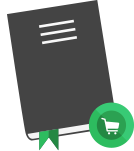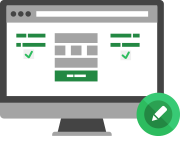Certified Data Analysis Professional Online Course

Introduction
The Certified Data Analysis Professional is a first level, hands-on training course aimed at equipping you with the necessary concepts and tools needed to perform basic statistical and analytics reporting activities, in order to generate value out of the existing data.
The course will provide you with the knowledge required for understanding distinct methods used in the interpretation of statistical data. Also, by attending this certification program, you will be able to understand the basic methodology used in statistical interpretation of quantitative data and become proficient in using key Microsoft Excel features, histograms and Pareto Charts.
The course presents an overview of the basic data analysis concepts, such as data accuracy, preparation and comparability. Furthermore, the course provides both a general understanding upon basic analysis tools, such as mean, median and mode, as well as advanced operations, such as hypothesis testing or tentative sensitivity analysis.
Bonus: Premium subscription on smartKPIs.com - Available for 6 months, providing access to 500 fully documented KPIs and over 20.000 KPIs enlisted and one research report from the Top 25 KPIs series.
3 Key business benefits
- Achieve processes clarity and strategy optimization by implementing data analysis frameworks;
- Optimize the performance reporting processes by closing the gaps found in the data analysis tools used within your own business;
- Attain superior results by implementing data analysis procedures, which improve the achievement of your company’s objectives.
5 Benefits
- Improve the organization’s decision making process by gaining knowledge on data analysis and interpretation;
- Obtain the most relevant data you need by setting up a customized data analysis process;
- Achieve the management’s buy-in, by understanding the utility of implementing customized data analysis methodology in daily business activities;
- Provide a logical framework for understanding data analysis instruments;
- Obtain premium recognition as a Certified Data Analysis Professional, by completing a unique learning program.
Learning objectives
- Develop a hands-on, practical overview of data analysis and connected topics;
- Integrate statistical concepts and analysis tools that are widely used in corporate analytics environments;
- Analyze examples of practical applications for statistical methods used in solving real-life business issues;
- Acquire mastery of basic MS Excel and statistical techniques though practical examples;
- Solve complex problems, using intermediate and advanced Excel techniques.
Evaluation
The certification process is finalized only when you complete all of the 3 stages of the learning experience. You will receive the Certified Data Analysis Professional diploma after you have successfully completed all of the 3 stages of the learning experience. This certifies the skills and knowledge related to performance measurement field.
Online Purchasing Instructions


Choose a product and add it to the cart

Add more products or proceed to checkout

Fill in all the information and finalize the order

Check your email for confirmation and details
